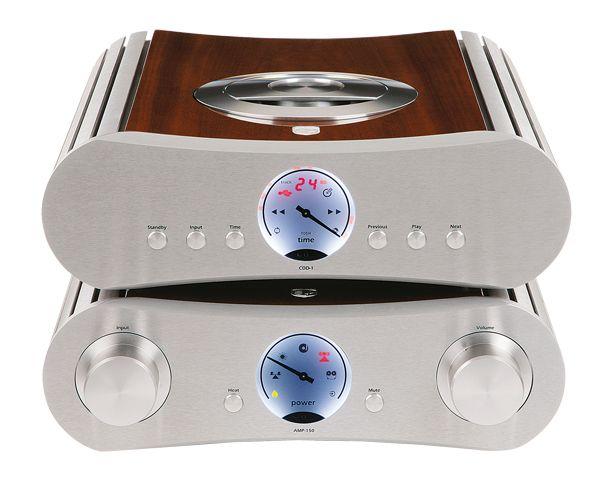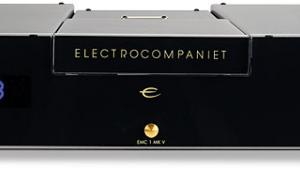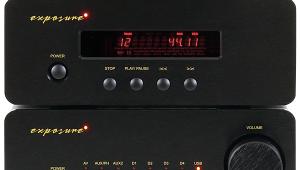Gato Audio Cdd 1/amp 150 (£5290 Each)

New to the UK market, the CDD-1 and AMP-150 are Gato’s flagship products, the visual design being the work of Kristen Dinesen.
They are both so compact that you might even think that the 150W (rated) per channel integrated must be a Class D amplifier. In fact, it uses a single-MOSFET output stage (actually, a pair for each channel).
The CDD-1 uses a Philips CD-Pro 2 mechanism and balanced dual-differential Burr-Brown D/A converters. Gato’s website headlines the dashingly styled CDD-1 as a ‘High-end DAC with a drive’, although the manual still calls it a ‘CD player/DAC’, and its USB input accepts sample rates up to 192kHz. When loading a disc, the top cover self-aligns when replaced.
The CDD-1’s big meter dial is a kind of wacky rev counter. As well as finding uses for the analogue pointer, Gato has crammed in all the other necessary display indications, including an LED digital readout, source icons for standard and USB digital inputs and the usual arrows for the CD transport.
Once a CD starts, the CDD-1’s pointer needle will move steadily to indicate progress through the track or disc. Track nos are indicated by the numeric display at the top of the dial.
When running as a DAC, the analogue meter has a different function, with scale markers for all the standard sample rates from 32kHz up to 192kHz, while the digital display shows the bit-depth.
The AMP-150’s input selector will cycle through one balanced line input and four unbalanced line-level inputs (CD, LP, Radio and Tape). Instead of ‘standby’, the front-panel button activates a pre-heating feature, which gets the amp to its optimum working temperature in 10-15 minutes. There is also an active low-noise cooling system; however, we never became aware of its operation.
Working in harmony
The CDD-1 itself was cleanly articulate, crisp and never edgy while the Gato amplifier could give singers and instruments a presence that was sometimes stunningly life-like. With them conected as a system, we felt that in terms of timbral naturalness and stereo imaging, the two products worked together in a way that really did make the whole seem greater than the sum of the parts.
On Dylan’s Blood On The Tracks [Columbia], the stereo stage became a vast panorama seeming to stretch well beyond the speakers. But it wasn’t just about wide-open spaces. On Jasmine [ECM] the combination put you up close to Keith Jarrett’s piano, hearing every string vibrate as the hammer struck; similarly, you felt the big, chesty resonance of Charlie Haden’s bass.
Verdict
Although the attention-grabbing design is a big part of the Gato package, these luxurious products do offer a harmonious listening experience too, especially when used together. The user interface may not suit everyone but the sound quality is excellent and as such is highly commended.
Originally published in the 2013 Yearbook
























































